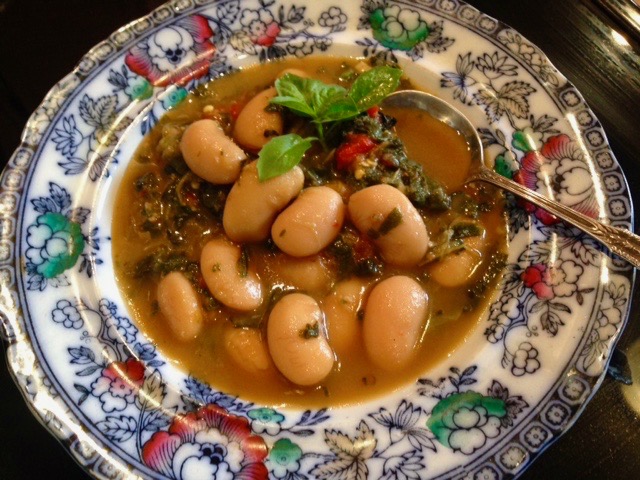Yemen, a country rich in cultural heritage and culinary traditions, offers a treasure trove of flavors in its cuisine. Among its most cherished dishes is Fasolia Yemeni, a hearty bean stew that embodies the warmth and hospitality of Yemeni cooking. This traditional dish combines simple ingredients with robust flavors, creating a comforting and satisfying meal. In this guide, we’ll explore the art of making Fasolia Yemeni, providing you with a step-by-step approach to creating this beloved stew in your own kitchen.
What is Fasolia Yemeni?
Fasolia Yemeni is a flavorful stew made with beans, tomatoes, and a blend of spices. It’s often enjoyed as a staple in Yemeni households and is commonly served with rice or bread. The dish is known for its rich, savory taste and the way it brings together the warmth of spices with the earthiness of beans. The beans used in Fasolia Yemeni are typically red kidney beans, although other types of beans can be used depending on regional variations and personal preferences.
Ingredients
To create an authentic Fasolia Yemeni, you’ll need the following ingredients:
- Red kidney beans: 2 cups, dried or 3 cups cooked (canned beans can be used for convenience)
- Olive oil: 3 tablespoons
- Onion: 1 large, finely chopped
- Garlic: 3 cloves, minced
- Tomatoes: 4 large, diced or 1 can (14 oz) of diced tomatoes
- Tomato paste: 2 tablespoons
- Ground cumin: 1 teaspoon
- Ground coriander: 1 teaspoon
- Ground turmeric: 1/2 teaspoon
- Ground cinnamon: 1/2 teaspoon
- Paprika: 1 teaspoon
- Cayenne pepper: 1/4 teaspoon (optional, for heat)
- Salt and pepper: To taste
- Water or vegetable broth: 4 cups
- Fresh cilantro: For garnish (optional)

Preparation
- Prepare the Beans:
- If using dried beans, soak them overnight in plenty of water. This helps to soften the beans and reduce cooking time. Drain and rinse the beans before cooking.
- Cook the soaked beans in a large pot of fresh water until they are tender. This usually takes about 1 to 1.5 hours. Alternatively, you can use a pressure cooker to speed up the process. Once cooked, drain the beans and set them aside.
- Sauté the Aromatics:
- Heat the olive oil in a large pot over medium heat. Add the finely chopped onion and cook until it becomes translucent, about 5 minutes.
- Add the minced garlic and cook for an additional minute, stirring frequently to avoid burning.
- Build the Flavor Base:
- Stir in the diced tomatoes and tomato paste, cooking for about 5 minutes until the tomatoes start to break down and form a thick mixture.
- Add the ground cumin, ground coriander, ground turmeric, ground cinnamon, paprika, and cayenne pepper (if using). Stir well to coat the tomato mixture with the spices, allowing them to bloom and release their flavors.
- Combine and Simmer:
- Add the cooked beans to the pot, stirring to combine them with the tomato and spice mixture.
- Pour in the water or vegetable broth, bringing the mixture to a boil. Reduce the heat to low and let it simmer for 30-45 minutes, or until the stew has thickened and the flavors have melded together. Stir occasionally and adjust the seasoning with salt and pepper to taste.
- Final Touches:
- If you prefer a thicker stew, you can use a potato masher to lightly mash some of the beans in the pot, creating a creamier texture.
- Garnish with fresh cilantro before serving if desired.
Serving Suggestions
Fasolia Yemeni is versatile and can be enjoyed in several ways:
- With Rice: Serve the stew over a bed of fluffy rice. The rice absorbs the rich flavors of the stew and provides a complete meal.
- With Bread: Accompany the stew with warm flatbread or Yemeni bread (malawah) for a traditional touch. The bread is perfect for dipping into the stew and savoring every last bit of the sauce.
- As a Standalone Dish: Enjoy the stew on its own for a hearty and satisfying meal.
Tips for Success
- Bean Texture: Ensure that your beans are tender but not mushy. Overcooked beans can disintegrate, affecting the texture of the stew.
- Spice Balance: Adjust the spices according to your taste preferences. Yemeni cuisine can be quite spicy, so feel free to modify the amount of cayenne pepper based on your heat tolerance.
- Make Ahead: Fasolia Yemeni tastes even better the next day as the flavors continue to develop. Prepare it ahead of time and store it in the refrigerator for up to 3 days. It can also be frozen for up to 3 months.
Conclusion
Fasolia Yemeni is more than just a stew; it’s a testament to Yemen’s rich culinary heritage and the art of blending simple ingredients into a deliciously complex dish. By following this step-by-step guide, you can bring a piece of Yemeni culture into your kitchen and enjoy a warm, comforting meal that’s sure to please. Whether you’re serving it for a family dinner or sharing it with friends, Fasolia Yemeni is a dish that embodies the essence of Yemeni hospitality and tradition. Enjoy the process, and savor the rich flavors of this beloved bean stew!




